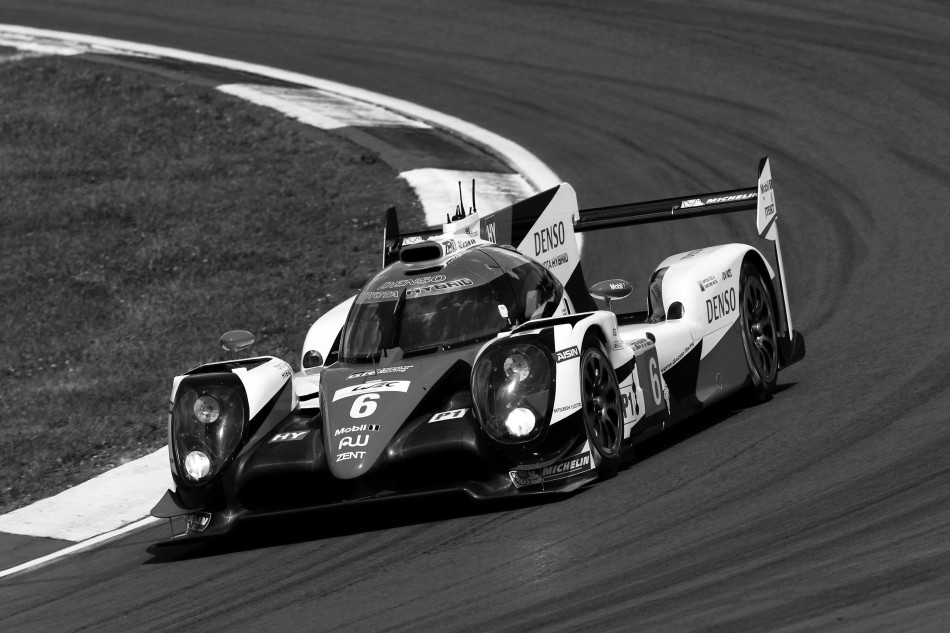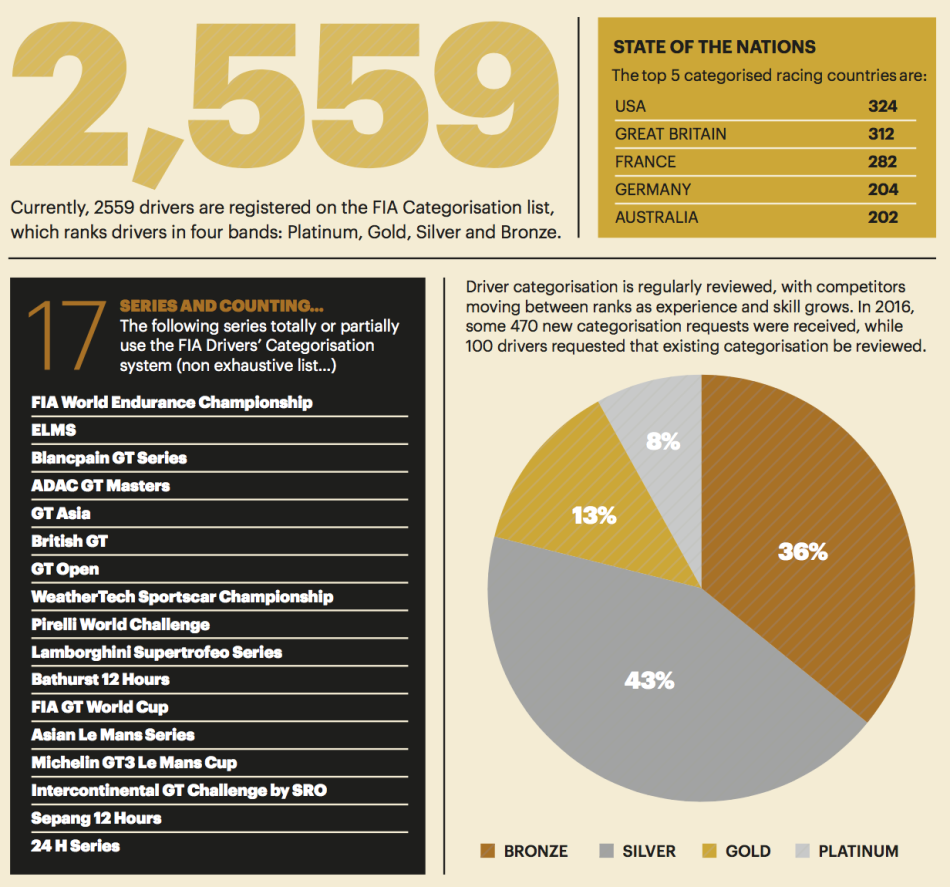From Auto #17: Precious Metals
The FIA’s Driver Categorisation system aims to provide a balanced competitive environment in series that mix racers of varying standards. Here’s how it works...


Maintaining the standards
Until 2014, series and championships mixing professional and amateur drivers had their own system of categorisation.
However, the FIA’s GT Commission decided to standardise the systems, and with the agreement of the FIA’s Endurance Commission, merged the categorisation into a common system. A new FIA Driver Categorisation Committee was formed and this is currently composed of a member from the GT3 series in Europe (SRO), a member of WEC/ACO, a member of the International Series in the USA and of the International Series in Australia, and three from the FIA GT Commission.
First published in 2015 the system places drivers in four categories: Platinum, Gold, Silver and Bronze. Competitors are evaluated on racing record (age, career achievements) and performance (racing times) during a season.
Each series or championship using the FIA Driver Categorisation system is free to adapt it to their own constraint, in order to establish homogeneous grids. For example, in the FIA WEC, to race in the top class, LMP1, a driver must, at the minimum, be ranked as Silver. In LMP2 a crew of two or three drivers must include at least one Silver or Bronze driver and in GTE Am a crew of two or three drivers must include at least one Bronze, as well as another Bronze or Silver.
The system aims to help drivers gain experience and progress. It also provides teams with a strategic conundrum, as finding the best racer in each category and knowing when to deploy him/her in a race can mean the difference between victory and defeat, as Bob Friend, Team Manager of 2016 European Le Mans Series champions Jota Sport explains.
“It’s all about the silver driver,” he says. “There are lots of platinum and gold standard drivers. It’s the silver that’s important. In ELMS, they’ve got to be really on it, as they’re probably going to be racing against a platinum or a gold driver at some point during their stint. A good silver can be worth a platinum to a team.”
Driving forces of categorisation
The 2016 FIA GT World Cup in Macau featured drivers from every category. They included:
Edoardo Mortara
Audi DTM driver Edoardo Mortara from Italy is a former FIA Formula 3 Euroseries champion and a back-to-back winner of the Macau Grand Prix in 2009 and 2010. He finished second in the 2016 DTM drivers’ championship.
Adderly Fong
Hong Kong’s Adderly Fong is GT Asia driver and former GP3 racer. He took part in the first practice session for the 2014 Abu Dhabi Grand Prix for the Sauber team and tested for the Swiss squad in 2015. He won the 2013 Audi R8 LMS Cup.
Ricky Capo
Driving a Modena Engineering BMW Z4 at the Macau race, former F3 Australia driver Ricky Capo raced in GT Australia in 2016, as well as taking part in the F3 Masters event at Zandvoort in Holland where he finished in 14th place.
Tommy Tulpe
Germany’s Tommy Tulpe races in the DMV GTC series for touring and GT cars, where he is a Class 10 Germany Cup driver. Tulpe won his category in 2016 driving an Audi R8 LMS for the Rutronik Racing squad.
Click here to read the full Auto #17 magazine.

 Facebook
Facebook Twitter
Twitter






